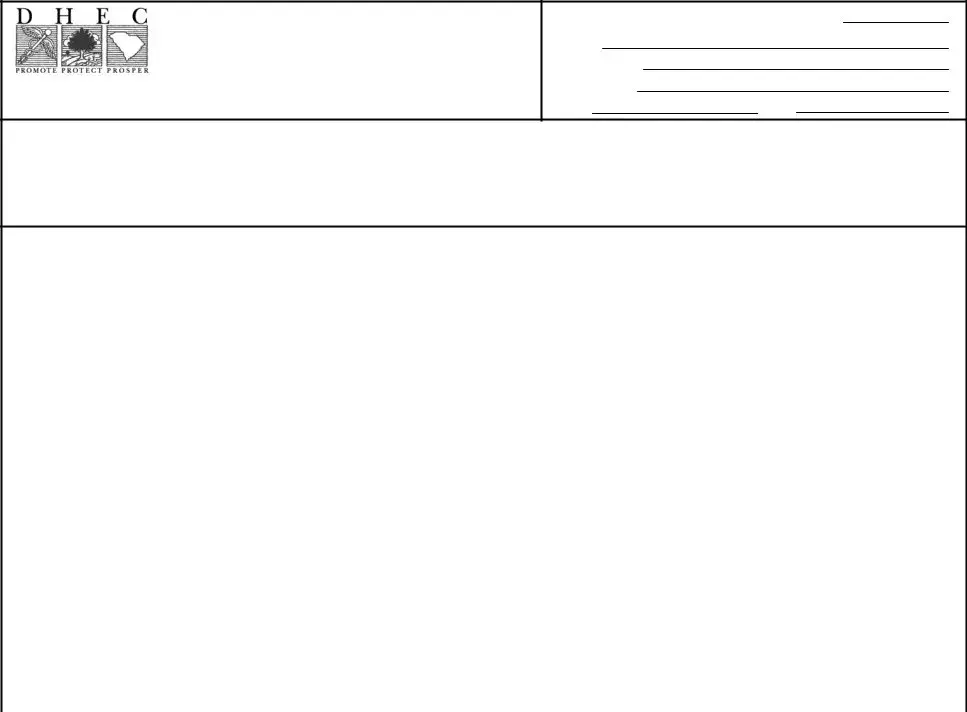SC VFC PROGRAM
VACCINE BORROWING REPORT
Provider
Street Address
City/State/Zip
PhoneFAX
VFC-enrolled providers are expected to maintain an adequate inventory of vaccine for both their VFC and non-VFC eligible patients. VFC vaccine cannot be used as a replacement system for a provider’s privately purchased vaccine inventory. Borrowing should occur only when there is lack of appropriate stock vaccine (VFC or provider-purchased) due to unexpected circumstances such as a delayed vaccine shipment, vaccine spoiled in-transit to provider, or new staff that calculated ordering time incorrectly. Routine/ planned/ sustained borrowing is not acceptable. The provider must assure that borrowing VFC vaccine will not prevent a VFC-eligible child from receiving a needed vaccination because VFC vaccine was administered to a non-VFC eligible child.
|
|
|
|
|
|
|
|
Date Vaccine |
Vaccine |
Patient Name |
DOB |
Date Borrowed |
|
Reason No Appropriate Stock Vaccine Was Available |
Returned to |
Borrowed |
|
Appropriate |
|
|
|
|
|
|
|
|
|
|
|
|
|
|
|
Stock |
|
|
|
|
1. |
Private stock order delayed |
2. |
Private stock non-viable on arrival |
|
|
|
|
|
3. |
VFC order delayed |
4. |
VFC order non-viable on arrival |
|
|
|
|
|
5. |
Other (specify) |
|
|
|
|
|
|
|
|
|
|
|
|
|
|
|
|
1. |
Private stock order delayed |
2. |
Private stock non-viable on arrival |
|
|
|
|
|
3. |
VFC order delayed |
4. |
VFC order non-viable on arrival |
|
|
|
|
|
5. |
Other (specify) |
|
|
|
|
|
|
|
|
|
|
|
|
|
|
|
|
1. |
Private stock order delayed |
2. |
Private stock non-viable on arrival |
|
|
|
|
|
3. |
VFC order delayed |
4. |
VFC order non-viable on arrival |
|
|
|
|
|
5. |
Other (specify) |
|
|
|
|
|
|
|
|
|
|
|
|
|
|
|
|
1. |
Private stock order delayed |
2. |
Private stock non-viable on arrival |
|
|
|
|
|
3. |
VFC order delayed |
4. |
VFC order non-viable on arrival |
|
|
|
|
|
5. |
Other (specify) |
|
|
|
|
|
|
|
1. |
Private stock order delayed |
2. |
Private stock non-viable on arrival |
|
|
|
|
|
3. |
VFC order delayed |
4. |
VFC order non-viable on arrival |
|
|
|
|
|
5. |
Other (specify) |
|
|
|
|
|
|
|
1. |
Private stock order delayed |
2. |
Private stock non-viable on arrival |
|
|
|
|
|
3. |
VFC order delayed |
4. |
VFC order non-viable on arrival |
|
|
|
|
|
5. |
Other (specify) |
|
|
|
|
|
|
|
1. |
Private stock order delayed |
2. |
Private stock non-viable on arrival |
|
|
|
|
|
3. |
VFC order delayed |
4. |
VFC order non-viable on arrival |
|
|
|
|
|
5. |
Other (specify) |
|
|
|
|
|
|
|
|
|
|
|
|
“I hereby certify, subject to penalty under the False Claims Act (31 U.S.C. § 3730) and other applicable Federal and state law, that VFC vaccine dose borrowing and replacement reported on this form has been accurately reported and conducted in conformance with VFC provisions for such borrowing and further certify that all VFC doses borrowed during the noted time period have been fully reported on this form.”
Provider’s Printed Name: |
|
Provider Signature: |
|
Date: |
|
|
|
|
|
|
|
DHEC 1167 (Rev. 3/2011) |
SOUTH CAROLINA DEPARTMENT OF HEALTH AND ENVIRONMENTAL CONTROL |
|
|
|
SOUTH CAROLINA DEPARTMENT OF HEALTH AND ENVIRONMENTAL CONTROL
SC VFC VACCINE BORROWING REPORT
Instructions for Completing
Purpose:
The purpose of the SC VFC Vaccine Borrowing Report is to provide documentation of borrowed vaccine from private stock or VFC stock.
Item-By-Item Instructions:
1.Enter Provider Identification Number and all contact information in space provided.
2.For each vaccine borrowed from either private stock or VFC stock, complete all fields (i.e., Vaccine Borrowed, Patient Name, Date of Birth, Date Borrowed and Reason No Appropriate Stock Was Available columns). Each vaccine a child receives must be listed on a separate row.
3.Once the vaccine is replaced, enter the date in the Date Vaccine Returned to Appropriate Stock column.
4.The provider must print, sign and date the form.
5.The provider must contact the SC VFC Program (803) 898-0460 upon each event.
Office Mechanics and Filing:
Completed SC VFC Vaccine Borrowing Report(s) are to be maintained by the provider as part of the VFC program records for (3) years. If copy is requested by the SC VFC Program, then it will also be retained for (3) years.
DHEC 1167 (Rev. 3/2011) |
SOUTH CAROLINA DEPARTMENT OF HEALTH AND ENVIRONMENTAL CONTROL |
